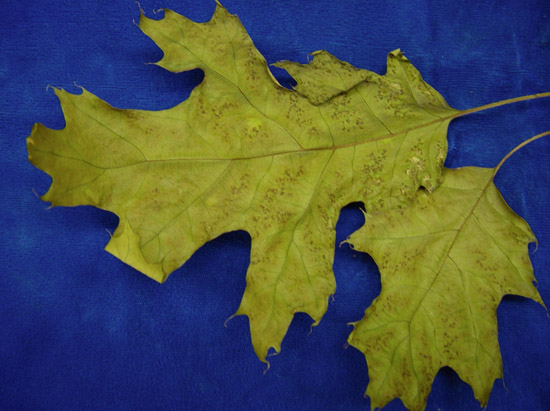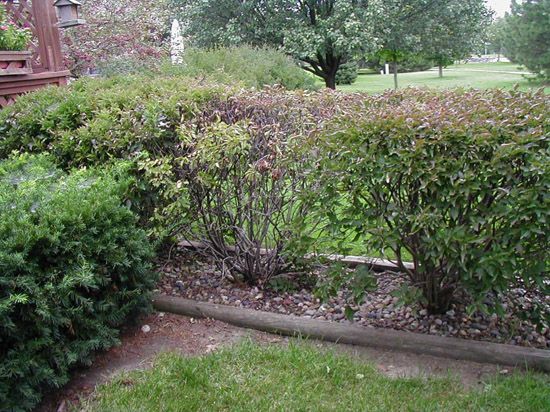Issue 15, September 2, 2011
Dealing with Drought
No drought is not a disease, but it can be categorized as an abiotic disease or condition. It seems as of late, I am having to write a lot of Plant Clinic sample reports that read, "suspect drought stress" or "water in times of drought." This is not surprising, as most of Illinois and other areas of the US are experiencing either abnormal to severe drought conditions. The picture below is take from the Current US Drought Monitor as of August 30, 2011.

Without any rain in sight for several weeks now, even my own hydrangeas were wilting in the scorching heat and dry conditions. There are numerous symptoms that a plant can exhibit when suffering from drought stress. But, remember as always, other factors can mimic signs of drought, such as compacted soil, mechanical root injury, cold injury, improper pesticide use, and even over-watering. A great website that describes drought symptoms can be found at Recognizing Drought Injury Symptoms on Plants, By Mary Small, Colorado State University Cooperative Extension Agent, Urban IPM
Other great resources explaining drought symptoms and care can be found at: Plant Stress-U of I Extension Dealing with Drought (Adobe PDF) and Leaf Scorch-U of I Extension Dealing with Drought (Adobe PDF).
I have received several e-mails within the last several weeks describing some these drought symptoms such as, "several maples in the neighborhood have leaves that have turned brown, but remain attached to the branch", "I have an ash that has been dropping leaves for some time", and "several honey locust trees in the Springfield area have oozing cankers". As always at the Plant Clinic, we would like to rule out disease as a culprit for any of the above symptoms, but often times, drought stress is the diagnosis or the underlying issue.

Drought deficiency symptom or interveinal speckling on a maple. I have also seen this symptom on several oak leaves this season.

Drought stress symptoms on shrubs (photo by Nancy Pataky).
If possible, you may choose to water a tree, perennial, or even the entire yard, depending on your priorities and situation. We recommend that you try to relieve all plant stress as this can predispose them to disease or insect infestation. It is becoming late in the season, but plants are suffering. You may choose to water your long term investments or trees and shrubs that can't be easily replaced, rather than annual flowers or veggies. Then, we can't forget, our lawns that can dry up due to lack of water. Cool-season lawns will go dormant when conditions become hot and dry. When dormant, the need for water is not as great.
Remember, some trees or plants are more prone to drought stress than others. When deciding what to water, you may want to tend to those that have been newly planted first. Herbaceous perennials in exposed sites can be more vulnerable to drought as well as other environmental stresses. Trees with shallow root systems such as maple, linden, alder, hornbeam, dogwood, willows, mountain ash, spruce, fir, arborvitae, yew, boxwood, and euonymus can be at risk when there is insufficient moisture and could also benefit from mulching. Lastly I would like to note, we often recommend fertilizing trees in the fall, but in some cases, injury could result if trees are suffering from drought. Salts in fertilizers can burn roots if they have not received sufficient water.
Now, for the watering questions: Where do I water? How much water? Well, I will leave this to the U of I Extension Horticulture experts. Here are several great factsheets explaining the proper watering techniques:
Proper Sprinkler Use-U of I Extension Dealing with Drought (Adobe PDF)
Proper Lawn Care-U of I Extension Dealing with Drought (Adobe PDF)
Watering Trees and Shrubs-U of I Extension Dealing with Drought (Adobe PDF)
(Stephanie Porter)
Author:
Stephanie Porter